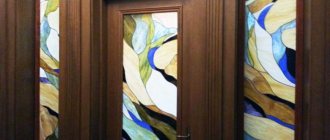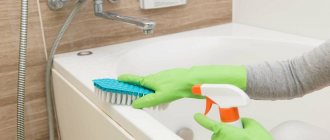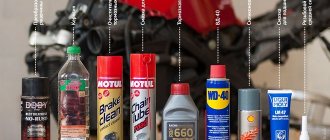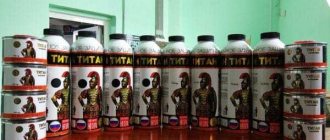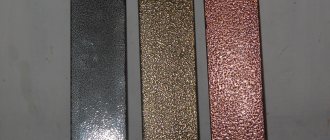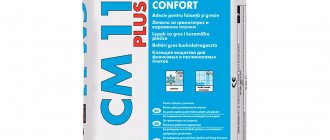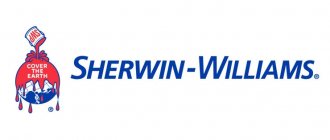If you work with paints and solvents, then the air around you contains harmful organic gases and vapors. With regular exposure to such an environment, health begins to deteriorate. As a rule, negative consequences appear after a certain period.
To minimize the negative impact, it is recommended to use personal respiratory protection equipment (hereinafter referred to as RPE). There are a lot of them, they are all different. Therefore, we will describe as clearly as possible which RPE to use in the paint booth.
What is a respirator
The concept of a construction mask means a personal protective equipment that filters inhaled air, preventing small particles and toxic vapors from entering the respiratory tract. The products are used not only in the construction industry, but also in various types of industry, in mines, and chemical plants.
Externally, the protective equipment is a half mask that covers the oral cavity and nasal passage. A headband is provided for convenient fixation. The products are made from filter material. Depending on the protection class, the design may include an exhalation valve and a nose clip.
Thanks to the presence of a valve, condensation is prevented from collecting on the inner surface of the mask.
Personal protective equipment of different classes is produced, which determines their scope of application. Products are disposable and reusable. Each model has a limited time resource during which the mask provides safety. After this period, the disposable version is disposed of, the filter in the reusable version is changed, and the material is processed.
The operating principle of protective masks is based on the retention of harmful particles and vapors by the filter and filter material. The desired effect can be obtained by using the product in an atmosphere containing at least 17% oxygen. When there is a high concentration of toxic compounds and contamination, it is recommended to use isolating filters.
3M 7502 size M
The low breathing resistance of the device and the soft sealing surface make the model comfortable during long-term wearing. Equipping with a Cool Flow valve significantly reduces heat accumulation by venting exhaled air. Two filters in the design allow you to evenly distribute the weight and not block your view. Used with 3M bayonet filters, the model provides protection against vapors, gases, and/or harmful particles. Accessories and parts help you maintain the right level of protection and comfort.
Type
: half mask.
Size
: M.
Adjustment straps
: There is.
Weight
: 136 g.
Cost: from 1900 to 3100 rubles.
3M 7502 size M
Where are they used in construction?
Construction respirators are widely used when performing painting work, interacting with aggressive chemicals, mixing and pouring concrete, and other mixtures containing small dust particles.
According to regulatory documents regulating safety precautions, it is necessary to use respiratory protection in the following cases:
- in places where there is a high concentration of dust from concrete, radioactive, wood, etc. mixtures;
- cutting glass, metal;
- dilution of toxic substances;
- dismantling of structures/finishes, etc.
History of appearance
The first effective means of protection against dust appeared thanks to Leonardo da Vinci and Alexander Humboldt (16-18 centuries). Respirators were made of cloth soaked in liquid or a bag that covered the head and had holes for the eyes.
Moistened cotton and wool served as additional filtering agents. Purification of harmful gases was carried out with lime and activated carbon. Chemist John Stenhouse (Scotland) invented the first respirator with an activated carbon filter. The fire respirator, developed by John Tyndall (England, 1871) consisted of two layers: coal, wool (impregnated with calcium hydroxide, glycerin).
Criterias of choice
It is easier to choose PPE if you take into account the main criteria that determine the degree of respiratory tract protection and the purpose of the products.
How to choose a respirator
Manufacturer
Among the huge range of respirators, it is difficult to give preference to one model. Even if the mask fits tightly, there is no confidence in its effectiveness. You can reduce the risk of buying a useless item by considering options from well-known brands that guarantee the quality of their products. The following manufacturers are trustworthy:
- ROS;
- STAYER;
- 3M;
- JETA SAFETY;
- Source;
- Sibrtech;
- Bison;
- FIT, etc.
Respirator design
Respiratory aids come in different designs:
- tightly fitting to the face - masks, half masks, quarter masks;
- loosely fitting to the face - hoods, helmets.
Products that belong to the first type differ in the area of covering areas of the face:
- the mask completely covers the nose, mouth, chin and eyes;
- the half mask has a similar overlap area, with the exception of the eyes;
- The quarter mask covers only the nose and mouth.
Number of filters
The most popular PPE are half masks made of plastic or rubber. They are equipped with one or two filters. The number of filters depends on the protection class of the model. Products with different types of filter elements will help prevent highly toxic impurities and gases from entering the body.
Principle of operation
PPE is divided into two groups depending on the method of supplying air to the respiratory organs: filtering and insulating. The operating principle of the first option is based on cleaning inhaled air masses by passing them through filter material, which is an integral part of the respirator or is connected to special holes.
In isolating devices, air enters the respiratory tract by pressurizing or through other manipulations. The design of such models is quite complex. PPE of this group is divided into autonomous and hose. Self-contained respirators are partially or completely isolated from the external environment.
Clean air is supplied from the breathing bag. When exhaling, the flow enters the regenerative cartridge, where it is purified and enriched with oxygen. The air again becomes suitable for operation of the device. Thus, a closed cycle of air mass movement is observed.
Some models of self-contained respirators operate with an open circuit, when exhaled air is released into the environment without purification and oxygen enrichment.
Hose respirators operate on air compressed by a compressor to high pressure. It enters the respiratory tract on a regular basis or when excess pressure is exceeded.
Protection class
Filtering PPE is divided into three groups, which determine the degree of protection.
First grade . This category includes FFP1 and P1 respirators. They are capable of retaining up to 80% of hazardous compounds present in the air. The MPC indicator is 4. The main purpose is to prevent the ingress of non-toxic dust when working in the woodworking industry and construction.
Second class . This group includes products like FFP2 and P2. The ability to retain harmful impurities is up to 94%. The MPC indicator corresponds to 12. Respirators filter dust of medium toxicity. Main areas of application: metallurgy, welding, construction.
Third class . These products include models marked FFP3 and P3. Filters are capable of retaining up to 97-99% of the pollution present in the air. The MPC indicator is 50. It is advisable to use such respirators for protection against toxic substances, gases and harmful vapors, including radioactive dust.
Type of pollution
When choosing personal respiratory protection, it is important to consider the type of pollution that you plan to encounter when performing certain work. Respirators are available that can neutralize the following types of pollution:
- aerosols;
- couples;
- gases;
- small dust particles.
Maximum pollutant concentration
When considering PPE, it is worth paying attention to such an indicator as the maximum permissible concentration. They produce four main types of respirators with varying degrees of protection, which determine the maximum permissible concentration of harmful substances in the air:
- filtering half masks – maximum permissible concentration up to 50;
- half masks with replaceable filters ZM - maximum permissible concentration up to 50;
- full-fledged masks equipped with replaceable filters ZM - maximum permissible concentration up to 200;
- forced air supply and filtration systems Versaflo – maximum permissible concentration up to
Is there a removable filter, inhalation and exhalation valve?
Respirators equipped with removable filters deserve attention. These are reusable products that can last for a long time if the filters are replaced in a timely manner. The material from which the masks are made can be treated with steam or detergents to remove contamination. Air purification is provided by 1 or 2 filters.
In the presence of an exhalation valve, carbon dioxide is released into the external environment, which prevents it from entering the respiratory tract. The inhalation valve ensures the flow of clean air.
Harmful substances
Directly during paint application, the main danger is the base of the enamel and varnish, and during drying - solvent vapors . This is due to the application method, since when a substance is sprayed, especially under high pressure, part of it is reflected from the surface and hangs in the air in the form of fog. The higher the pressure and the closer the spray gun nozzle is to the surface, the less paint remains on the car body, and in some systems up to 60-70% of the substance can be retained in the air. Those. Painting with a roller and paint is safer, although the quality leaves much to be desired.
The most dangerous substances in the paint itself are isocyanates, the vapors of which pose a danger already at a concentration of 0.1 ppm - 5-10 minutes without sufficient ventilation. Not all isocyanates and related substances are dangerous, and solvents can cause more harm. The most harmful among them are benzene, carbon disulfide and benzene derivatives (toluene and xylene). Contact with them cannot be avoided, but it is advisable to minimize it.
The lack of solvent in the system is also not a reason to remove the respirator. Hardeners based on amides and isocyanates (the most popular substances) can cause irreparable harm to health. Because of this, care must also be taken with polyurethane and epoxy materials.
What does the letter marking mean?
When choosing a respirator, experts advise taking into account the letter marking. It indicates what types of contaminants a particular model of respiratory protection product is intended to protect against. Letter symbols are most often duplicated by color designation.
Decoding letter markings | ||
| Letter | Color | Type of pollution that the product protects against |
| R | white | fog, dust, smoke |
| A | brown | vapors and gases of organic compounds with a boiling point above 65 degrees |
| OH | brown | vapors and gases of organic compounds with boiling points up to 65 degrees |
| IN | grey | gases and vapors of inorganic compounds |
| E | yellow | acid gases |
| TO | green | ammonia and derivatives |
| NO-P3 | blue-white | Nitric oxide |
| HgРЗ | red and white | organic matter, mercury vapor |
| SX | violet | toxic gases (for example, phosgene) |
Personal protective equipment marked NO-P3 are disposable products. Their validity period is limited. Reuse of masks or respirators of this category is prohibited.
How to use?
There is a general standard for the use of respirators when carrying out painting work. When using them, it is important to follow the instructions.
Taking into account all these points, it is possible to ensure the correct use of paint masks and other types of respirators when working with paints and varnishes.
For tips on choosing a respirator, watch the video below.
Source
